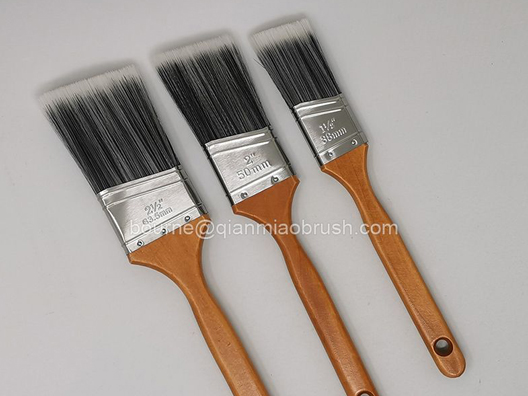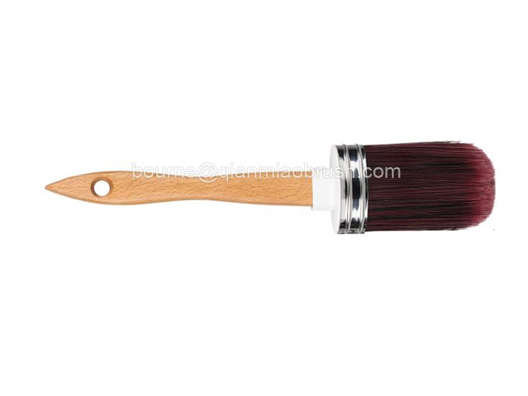Find the Best Paint Brush for the Job
If you’ve ever grabbed the cheapest paintbrush, figuring they were all the same, you now know what to blame for the disappointing results.
If you’ve ever grabbed the cheapest paintbrush, figuring they were all the same, you now know what to blame for the disappointing results.
Facepaint hold more paint and apply it more evenly, won’t leave you with bristles stuck in your paint, and are easier to clean.
Here are some paintbrush pointers from the experts at Consumer Reports.
Find the Best Brush for the Job
Match Material to Finish
Brushes with synthetic bristles made from nylon, or nylon and polyester, are best for water-based latex paints. That’s because natural-bristle brushes will soak up too much water and go limp. Use natural-bristle or blended (natural and synthetic) brushes for oil-based paint and finishes.
Consider Quality
Look for tightly packed bristles all the way through the ferrule (the metal part at the base of the handle) that spring back when you bend them.

3P Set Angle Paint Brush
“In quality brushes, the bristle ends are split, or ‘flagged,’” says Rico de Paz, the engineer who oversees Consumer Reports’ paint and stain testing. “This helps create good paint release and a smoother finish.”
The bristles should vary in length, allowing the brush to come to a point for more detailed work. When shopping, run your hand over the brush and pull gently; you shouldn’t find more than a couple of loose bristles.
Pick the Right Type
For wide, flat surfaces, such as siding, use a 3-inch to 4-inch flat brush. A 2-inch angled sash brush is ideal for cutting in around doors and window frames. Paint trim with a 1-inch to 2-inch angled sash brush.
Look for Comfort
A brush should feel good in your hand, so the size recommendations above are only a guide.
Anatomy Of An Artist Paint Brush
Here is the anatomy of a paint brush for those of you who are not familiar with the terminology:
Paint Brush Bristles
Artist brushes come with many different types of bristles. The bristles will generally determine what medium a brush is suitable for. For example, oil painting requires bristles which are resilient and have a nice spring. Acrylic paint is not as harsh so you can use bristles which are a bit finer. Watercolor painting requires soft bristles which can hold lots of water.
Bristles for artist brushes come in two forms - synthetic and animal. Animal hair brushes tend to be more expensive but they can hold and apply paint in a way which is not possible with synthetic brushes. However, synthetic brushes have come a long way. I make use of both synthetic and animal hair brushes for my paintings.

Purple Filament Chalk Paint Brush
Here is a summary of the different bristles:
Synthetic: Economical and versatile options for all painting mediums. Most synthetic brush manufactures will combine synthetic bristles with animal bristles so you get the best of both worlds. I would avoid cheap synthetic brushes as they are not durable and lose shape quickly.
Hog: Stiff, springy and economical. Hog hair brushes tend to do most of the heavy lifting in oil painting due to their durability and stiffness.
Sable: Not actually made from sable hair but rather from the tail of a species of mink (a member of the weasel family) found in North-Eastern China and Siberia. Sable brushes are extremely fine, springy and hold lots of water, making them perfect for watercolor painting and fine oil/acrylic painting.
Squirrel: Very soft hair with little snap due to a lack of resistance. Squirrel hair is suitable for watercolor painting, inking and any other low-resistance mediums.
Badger: A popular hair for oil painting. Badger hair brushes tend to be the thickest at the tip of the brush and thinner around the belly, making them perfect for general and broad brushwork.
Mongoose: Sturdy and resilient hair which is used in oil and acrylic painting.